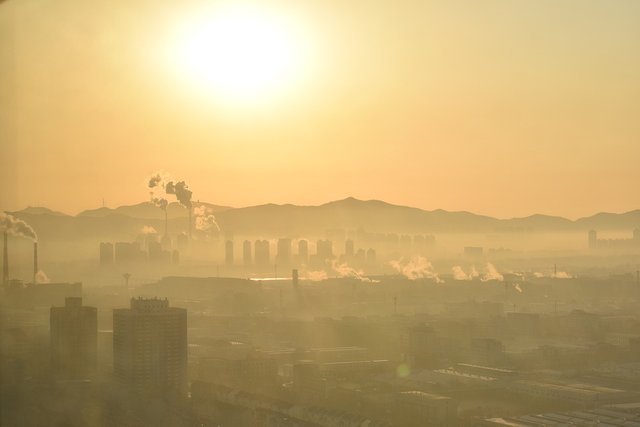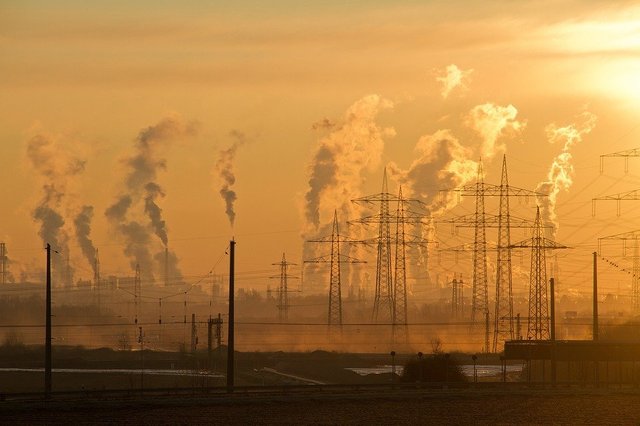Although we already knew that particles dispersed in the atmosphere, with sizes of a few microns, can be harmful to health, a recent combination of analytical methods to determine their composition have shown that they can be even more dangerous than previously thought.

Air quality is related to suspended particles in the atmosphere. Image credit: pixabay.com.
A group of researchers from the Paul Scherrer PSI Institute have succeeded in observing for the first time the reactions that occur in these tiny particles floating in the air, and in doing so, they discovered that through photochemical processes oxygen radicals are produced that can be harmful to health. The results of this research were recently published in the journal Nature Communications.
We are aware that particles in the air pose a danger to human health; those that are only a few microns in size can penetrate and accumulate in lung tissue, and also contain radicals that can damage cells. These particles get into the air due to smoke from factories and vehicular traffic. But until now, from previous research it was known that these particles when absorbed in the respiratory tract form oxygen radicals, as they exchange oxygen with other molecules forming more reactive compounds such as hydroxyl radicals or methyl radicals produced from particles produced by combustion sources; these compounds cause oxidative stress in other molecules, to which medical experts attribute respiratory diseases such as asthma and pneumonia.
Looking inside the particles
But in previous studies these particles have been examined by mass spectrophotometry to know what they are composed of, and this technique does not provide information about the individual structure of the particles and the processes occurring inside them.
But in this study, thanks to the bright light of X-rays, it was possible to observe these particles individually with a resolution of less than one micrometer, using a triad of photochemical experiments to observe cycles of chemical reactions at the nanoscale inside the particles. These experiments included a combination of high-resolution X-ray microscopy techniques in addition to a single-particle electrodynamic balance.

Suspended particulates are due to both natural sources and emissions from combustion sources. Image credit: pixabay.com.
The researchers analyzed particles from natural sources such as desert dust and volcanic ash, as well as those from industrial emissions and traffic, finding that in the atmosphere the components of these particles combine to form iron complexes that then form dangerous radicals under the action of sunlight, which in turn form reactive oxygen species.
This information is very important because it allows scientists to better understand how airborne particles affect people's respiratory health, but it also makes it necessary to reformulate the models and control parameters regarding air quality, having to include a new factor that helps protect people from critical levels of certain airborne particles that induce the development of respiratory diseases.
Thanks for coming by to read friends, I hope you liked the information. See you next time.

hello @emiliomoron ,
with each new advance in science we realize how polluted this planet is and the things that affect the human being, the particles generated by industrial activity are affecting in many ways especially the breathing of human beings, I hope that with these studies can encourage all countries to take measures to reduce pollution on this planet where we all live.
Downvoting a post can decrease pending rewards and make it less visible. Common reasons:
Submit
That's right my friend, when we improve our analysis methods the more we realize that this planet needs urgent solutions to the pollution problem.
Downvoting a post can decrease pending rewards and make it less visible. Common reasons:
Submit
Hello friend, interesting publication, the truth is not new the fact that our planet is very polluted and that we owe it to our way of living, unfortunately we are the ones who have made this a reality, I think we could do more about it, but not all countries have the resources. Greetings!
Downvoting a post can decrease pending rewards and make it less visible. Common reasons:
Submit
That's right my friend, knowing that our air is polluted is not news, but knowing more clearly how air pollutants affect us will help us better take the necessary actions to control and mitigate them. Greetings friend!
Downvoting a post can decrease pending rewards and make it less visible. Common reasons:
Submit